Health & Education
We all want the best care possible for our horses. The Heath & Education section covers both Learning Institutions, Organizations as well as many sources for equine assistance including Veterinarians and Farriers.
For those who want a to formally study horses, the Education section includes College Riding, Equine Studies, and Veterinary Schools. Learn about the wide variety of horses in the Horse Breeds section. Supplements and Treatments Therapy are also included in the section.
Everyone can learn from Fine Art and there are some specialty Museums that might surprise you.
Horses as a therapy partner enrich the lives of the disabled. These facilities are listed in our Therapeutic Riding section. To help children and young adults build confidence and grow emotionally, please see the resources available on the Youth Outreach page.
Looking for a place to keep your horse? You can find it in the Horse Boarding section. Traveling? Find a Shipping company or Horse Sitting service if your horse is staying home!
Want to stay up to date with the latest training clinics or professional conferences? Take a look at our Calendar of Events for Health & Education for the dates and locations of upcoming events.
Do we need to add more? Please use the useful feedback link and let us know!
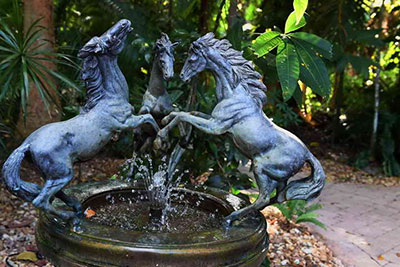
by Diana De Rosa
In 2005, my mom was diagnosed with cancer and like any devoted daughter who was devastated by the thought of losing her “rock,” I went in search of answers. I came up with Hippocrates, a hidden treasure of health and wellness located in West Palm Beach, FL. While for my mom, going to their three-week Life Transformation Program didn’t happen, I never forgot what I heard in the orientation session we attended.
Since then, I have devoted a large portion of my life to learning about alternative methods of health. I’ve delved into healthy eating habits, essential oils, detoxification, pH balancing and so much more.
Because of the knowledge gained over the years, often people will come to me for advice for simple things like a cold or more complex issues like cancer. Together we discuss things they should consider to help strengthen their mind, body, soul, spirit and their immune system. My consistent answer to everyone is, “if I were in your shoes, the first thing I would do is go and take the three-week Life Transformation Program offered by Hippocrates.”
Now 12 years later, I still make the same suggestion but when people started to ask very specific questions, it became clear that if I wanted to give them answers, I needed to test the waters. While three weeks would be my ideal, a busy lifestyle allowed me one week to see what Hippocrates is all about. Now as I look back on that experience it’s my goal to share what I call the “gift of health” to others, especially those involved with horses.
Hippocrates Can Also Help Horses
Florida in the winter is an area that has a host of horses in every breed and discipline including dressage, show jumping, reining, racing, polo, and so much more. So, it only makes sense that Hippocrates is a place for the horse people who love and care for them.
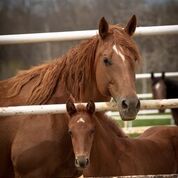
With a rapidly growing unborn foal, the transition time from mid- to late-gestation can pose nutritional challenges for pregnant mares.
Up to 60 percent of an unborn foal’s growth happens during the last three months of pregnancy. As such, late gestation can pose nutritional challenges for pregnant mares.
Comparatively, unborn foals grow very slowly (approximately 0.2 pounds per day) during the first seven to eight months of gestation, causing very little nutritional stress on the mare.
“Dry mares in early gestation can be fed like a mature, idle horse,” says Karen Davison, Ph.D., Director and Nutritionist for Equine Technical Solutions at Purina Animal Nutrition. “Good quality pasture or hay along with a ration balancer or vitamin/mineral supplement may be all that is necessary to meet the mare’s nutritional requirements.”
However, during the last 90 days of pregnancy, the fetus gains approximately 1 pound per day and has a significant impact on the mare’s nutritional requirements for protein, vitamins and minerals.

by Natalie Voss - from the Paulick Report
Earlier this month, veterinarians and state officials in three Florida counties (Columbia, Bradford, and Hillsborough) publicly announced they were dealing with a small outbreak of strangles, a contagious bacterial infection of the equine upper respiratory tract characterized by swollen lymph nodes. Strangles is a relatively common communicable disease, but in this case, alerts issued via the Equine Disease Communication Center indicated the outbreak's origin was a pen at a horse sale facility in Bastrop, La.
Though the specific location was unnamed in the alerts (it was not the well-known Bastrop Kill Pen, according to the information provided), the distributor's set-up is similar to many other so-called “kill pens” these days: facility operators or independent organizations offer horses destined for the slaughter pipeline for “bail” by rescues or private owners in exchange for a fee which is often higher than fair market value on the animal. When the money is paid, individuals may either own the horse or foster it until a permanent place can be found, and since social media is global, that means horses may leave such pens and travel many states away.
Dr. Angela Pelzel-McCluskey, equine epidemiologist with the United States Department of Agriculture/Animal and Plant Health Inspection Service, said that type of large-scale movement of horses is a serious biosecurity concern for people who foster or purchase the animals – not just for strangles, but other communicable diseases.
Read more: ‘Anonymous Horses’: Kill Pen Rescues Come With Serious Health Risks
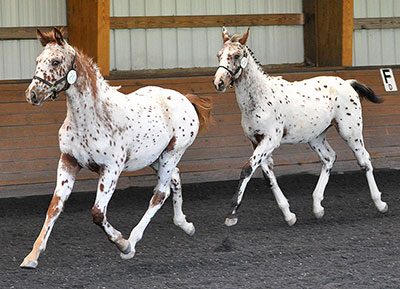
The Knabstrupper horse is an old and rare breed, originally developed in Denmark the horses come from the same original stock as the Spanish horses that gave rise to the Appaloosa. The Knabstrupper and the Appaloosa share the same unusual color patterns, they are the ‘spotted’ horses. The color variations range from the whole body spots of the classical Leopard pattern (sometimes called “Tiger’ pattern), in bay, black and chestnut to the blanket spotting and to varnish roan and snowflake patterns.
While their unusual color patterns make them eyecatching and different to look at, what makes the Knabstrupper really special is their superb temperaments and willing kind natures. Bred as working horse and selected as much for attitude and ability as beauty the Knabstrupper is a true family horse.
Read more: Introducing the Rare, Colorful and Beautiful Knabstrupper Breed
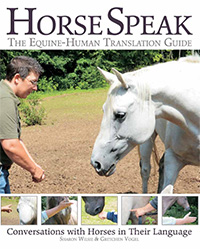
by Sharon Wilsie and Gretchen Vogel
This excerpt is reprinted with permission from Trafalgar Square Books.
Humans greet each other with a formal handshake the first time they meet, and horses have a similar system. The Greeting Ritual is the basic platform I have created to teach humans how Conversations with horses can exist.
The Greeting Ritual consists of three separate moments in which horses that are meeting touch noses on the Greeting Button. The speed at which they may perform these three touches varies from lightning-fast to very slow. The reason for three official touches is simple: there is much to say in a first, formal greeting, and it takes two subsequent touches to sort it all out. Plus, I find that horses learn about the world around them in processes of three or more.
First Touch: Formal Greeting, “Hello,” and Copycat
A horse’s pecking order is different from a dog’s, for example, because horses are concerned with how to run and move together in case of emergency. In a horse’s world, any moment could bring danger, and the more alpha a horse is in pecking order, the more responsible that horse is for fending off attackers. In dog psychology, the alpha dog calls the shots, but in horse psychology, to lead is to be responsible for the welfare of those that are weaker. The only difference in horse social order occurs between stallions. A herd is typically made up of grandmothers, aunts, mothers, and daughters. There is one dominant stallion, and he not only guards his ladies from other rogue stallions, but from mountain lions, wolves, and bears. Stallions that have no mares band together in bachelor herds, and although they can enjoy some rowdy play, they tend to develop strong emotional bonds with each other and follow the same herd dynamics as any other herd.
Domestic horses are bought and sold and moved from barn to barn, and have to deal with new herd members often. Sometimes they are not turned out directly with other horses and can only socialize over a fence, if at all. But the formal Greeting Ritual remains essential for horses who are just meeting each other to be able to sort out who will tell who what to do.
The First Touch is much like a formal human handshake. It is the “Hello” followed by an immediate question: “Where are you in the pecking order?” Horses size each other up and assess very quickly as much as they can about each other’s herd status. There is much more to it than just calling one “Alpha,” because a healthy herd has many diverse roles that get played out: the “Peacemaker,” the “Bully,” the “Sentry,” and the “Joker,” to name a few.
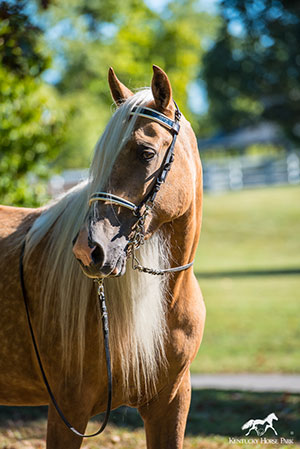
The Mountain Pleasure Horse is a breed of gaited horse that was developed in the Appalachian Mountains of Eastern Kentucky. This breed reflects the primitive Appalachian gaited horse type and genetic testing shows them to be ancestral to modern breeds developed in the region, including the American Saddlebred, the Tennessee Walking Horse and the Rocky Mountain Horse. Although formal written history is limited, individuals whose families have bred these horses for several generations can often provide names and dates as far back as the early 19th century. Some Mountain Pleasure Horse bloodlines are traceable for over 180 years.
The signature gait of the Mountain Pleasure Horse is an evenly spaced, four beat lateral gait, commonly known as the saddle rack. Lacking the moment of suspension that produces the bounce of a trot, this smooth intermediate gait is delightful to ride. In fact, people who have previously given up riding due to back or joint problems are often able to ride a Mountain Pleasure Horse in comfort. This natural gait of the Mountain Pleasure Horse is not taught or mechanically produced, but is the product of generations of careful breeding. Mountain Pleasure Horse foals are known to demonstrate their innate ability to perform this genetically inherited gait within hours of birth.
Read more: A Breed from the Appalachian Mountains, Introducing the Mountain Pleasure Horse!
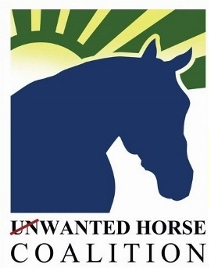
2017 "Operation Gelding" Applications Now Available
The Unwanted Horse Coalition has expanded the program and will pay up to $100 per horse gelded. Contact them with questions or to schedule a clinic.
APPLY NOW
UPCOMING CLINICS
January 14, 2017 - Hope in the Valley Equine Rescue, Valley Center, KS
February 25, 2017 - Brandon Equine Medical Center, Brandon, FL
March 11, 2017 - South Alabama Equine Rescue, Lapine, AL
March 24, 2017 - Tuskegee University College of Medicine, Tuskegee, AL

Walkaloosa Horse Association History
Although the Walkaloosa Registry is fairly new, the Walkaloosa horse has been around for centuries.
Appaloosa breeders claim to have the oldest recognizable breed known to man, a claim which is backed by drawings of spotted horses in the pre-historic ice caves of France. Paso Fino breeders consider their breed to be the oldest breed in the Western Hemisphere; the ancestors of the Paso Fino came to the New World with Columbus on his second voyage from Spain. The Paso Fino horses were the preferred mounts of the Conquistadors; Paso Fino literally translated is “smooth gait” and some of those horses also carried the spotted coat patterns of what is known as the Appaloosa today.
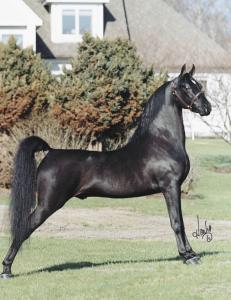
Courtesy of the American Morgan Horse Association
In 1789, George Washington became the first president of the United States and the U.S. Constitution was signed into law. That same year in Springfield, Massachusetts, a small bay colt named Figure was born. This colt was instrumental in building the new country and founded America's original equine breed, the Morgan.
The Morgan was the first recognized horse breed in the United States. It is the official state animal of both Vermont and Massachusetts. Other breeds have claimed existence in colonial times, but today only the Morgan can trace his bloodlines to a common ancestor. The Morgan has influenced other breeds, including Tennessee Walking Horses, Quarter Horses, Standardbred, and American Saddlebreds.
The Morgan horse is easily recognized by his proud carriage, upright graceful neck, and distinctive head with expressive eyes. Deep bodied and compact, the Morgan has strongly muscled quarters. His intelligence, willingness, zest for life, and good sense is blended with soundness of limb, athleticism, and stamina. In addition, Morgan thriftiness and longevity have made this breed a good bargain for more than 200 years.
- Big, Black and Beautiful! The History of the Majestic Friesian Horse
- Unwanted Horse Coalition Releases New Operation Gelding Program Policies for 2017
- Introducing the Trakehner: The Oldest of Warmblood Breeds
- Profiling the American Quarter Horse, A Very Versatile Breed
- Small but Mighty! See the Benefits of Feed Balancers
- Is My Hay Green Enough?
- Britain's Oldest Horse Breed in Battle for Survival
- Moriesians: Friesians and Morgans
- Horsemanship and Behavior
- Akhal-Teke, a Horse Like Shimmering Gold
- Six Ways to Feed Performance Horses for Greater Achievement
- Meeting Increased Summer Hydration Needs
- Meet the American Bashkir Curly Horse Breed
- Joint Prep and Conditioning for Show Season
- Finishing in the Winner’s Circle starts with Purina® Race Ready® Feed
- Why Does My Performance Horse Have a Weak Top Line?
- Bringing Compassion to the Horse Industry
- Horse Tales for the Soul "Never Look a Draft Horse in the Mouth"
- 5 Simple Ways to Increase the Range of Motion in Your Hips
- 7 Equine Emergencies and How to Treat Them












































